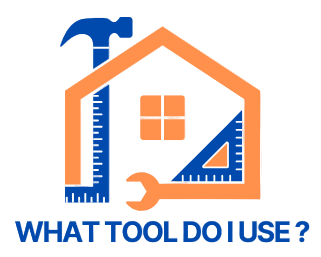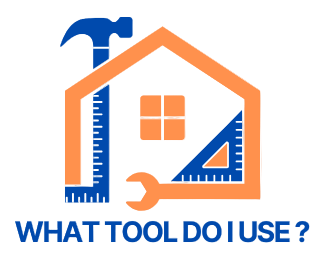To extend the life of your DIY tools, clean and dry hand tools after every use, oil moving parts, and inspect for damage. For power tools, clear vents, check cables and batteries, and keep blades sharp. Prevent rust with dry storage and moisture control. Organise tools in cabinets, pegboards, or labelled drawers for quick, safe access. 🧰
When you invest in a set of DIY tools, you’re not just buying equipment: you’re laying the foundation for countless home projects. Without proper care, even the best tools can rust, dull, or break long before their time. This guide explains how to maintain and store DIY tools effectively so they last longer, stay safer, and are always ready for action. ✅
✅ For more on getting started: What are the essential tools every beginner should own?
📖 View Table of Contents
- Why Tool Maintenance and Storage Matters
- Everyday Maintenance Tips for Hand Tools
- How to Maintain Power Tools
- How to Prevent Rust and Corrosion
- The Best Storage Solutions for DIY Tools
- How to Store Power Tools Safely
- Seasonal and Long-Term Storage Tips
- Tips for Keeping Your Workshop Organised
- Mistakes to Avoid
- Conclusion
- 🛠 Useful Tools & Accessories
- 🛠 Product Summary
- Read Next
Why Tool Maintenance and Storage Matters 🧽
Proper upkeep isn’t just about being tidy: it delivers real benefits:
- Saves money by avoiding premature replacements
- Improves safety by keeping tools in good working order
- Maintains performance so tools work as intended
- Saves time by preventing breakdowns or hunting for lost tools
Understanding how to maintain and store DIY tools is one of the easiest ways to protect your investment and enjoy smoother, more successful projects. 👍
Everyday Maintenance Tips for Hand Tools 🧰
Wipe Tools Down After Use
After each use, give your tools a quick clean with a cloth to remove dust, mud, or grease. Mild soapy water is fine, just make sure they’re completely dry before storing to avoid rust. 🧼
Tip: Keep a dry microfibre cloth in your toolbox for quick cleaning.
Check for Wear and Tear
Make inspections a habit. Look for cracks in handles, loose screws, rust patches, or bent heads. Catching problems early helps prevent injury and damage later on. 🔍
Oil Moving Parts
Tools with moving components, pliers, adjustable spanners, or garden shears, benefit from occasional oiling. Use a few drops of light machine oil to keep them smooth and rust-free. Wipe away excess to avoid grime build-up. ⚙️
How to Maintain Power Tools 🔋
Keep Air Vents Clean
Dust and debris can block vents on drills, sanders, and saws, causing overheating. Use a small brush or compressed air to clean vents, switches, and battery connectors. 🧹
Safety Note: Always unplug or remove the battery before cleaning.
Inspect Cables and Batteries
For corded tools, check for frayed wires or damaged housings. Cordless tools need clean contacts and dry storage. Avoid overcharging or fully draining batteries to extend their life. ⚡
Sharpen or Replace Blades
Blunt blades cause strain on motors and poor results. Keep blades sharp or replace them when you see burn marks on timber, slower cutting, or increased vibration. 🪵
How to Prevent Rust and Corrosion 🧪
Keep Tools Dry
Moisture causes rust. Dry tools thoroughly, avoid storing them on damp floors, and consider moisture absorbers or a dehumidifier in sheds or garages. 💧
Apply a Rust Protector
Use a light oil or rust-inhibiting spray on steel surfaces, especially saws, screwdrivers, spanners, and chisels. A small amount goes a long way. 🛡️
Store Tools in a Dry Environment
For garages or basements, improve ventilation and insulation, avoid temperature extremes, and use waterproof containers or cabinets. 🌡️
The Best Storage Solutions for DIY Tools 🗃️

Toolboxes and Trolleys
Great for hand tools. Choose sturdy boxes with dividers, lockable lids, and rust-resistant linings. Line metal drawers with rubber mats to stop tools sliding. 🧰
Wall-Mounted Storage Boards
Pegboards and tool walls make excellent use of vertical space. Hooks, magnetic strips, and outlines help you keep everything visible and organised. 🧲
Drawer Units and Cabinets
Ideal for larger or delicate tools. Organise by category, frequency, or project type. Foam inserts stop tools from clashing or scratching. 🗄️
Plastic Storage Crates
Perfect for rarely used items. Label clearly and keep off the ground to avoid damp. Avoid cardboard boxes: they attract moisture and pests. 🚫
How to Store Power Tools Safely 🦺
Unplug or Remove Batteries
Never store power tools plugged in or with batteries attached. For cordless tools, remove batteries after use, store them at 40–60% charge, and keep away from heat or damp. 🔌
Use Hard Cases or Shelves
Store tools in their original hard cases if possible. If not, use ventilated shelves and avoid stacking heavy items on top. 🧱
Wrap Cords Loosely
Coil cables gently and secure with reusable Velcro straps. Avoid tight winding or contact with sharp edges. 🌀
✅ Learn more: Common DIY tool safety mistakes, and how to avoid them
Seasonal and Long-Term Storage Tips 📅
Deep Clean Before Storing
Before long-term storage, clean tools thoroughly, sharpen blades, oil moving parts, and check for damage. ✨
Use Climate-Controlled Areas
Extreme temperatures and humidity harm tools. Store them in dry, well-ventilated areas and consider dehumidifiers or silica gel. 🌤️
Label Storage Clearly
Label drawers, boxes, and bins clearly so tools are easy to find, especially mid-project. 🏷️
Tips for Keeping Your Workshop Organised 🧩
Declutter Regularly
Once a month, clear out broken tools, duplicates, and unnecessary items. A tidy workspace saves time and boosts safety. 🧺
Designate Zones by Task
Group tools by function: measuring, cutting, fastening, or electrical. This keeps projects efficient and enjoyable. 📏
Use Clear Labels or Colour Coding
Especially useful in shared spaces. Colour-coded stickers or drawer labels make organisation quick and intuitive. 🎨
Mistakes to Avoid When Maintaining Tools ⚠️
- Leaving tools wet or dirty: moisture causes rust overnight. Always clean and dry before storing. 💦
- Overloading drawers or shelves: too much weight can damage units and make access difficult. 🧱
- Improper battery storage: don’t leave batteries in chargers or drain them completely, store partially charged in cool, dry places. 🔋
- Ignoring manufacturer instructions: tool manuals contain vital care and safety advice. 📘
Conclusion: Good Habits Extend Tool Life 🏁
Learning how to maintain and store DIY tools helps you protect your investment, stay safe, and save money over time. From cleaning and oiling hand tools to proper storage and organisation, small habits add up to big results. Start simple and stay consistent: your tools will thank you. ✅
Read Next 🔗
- Essential DIY Tools Every Beginner Should Own
- Beginner’s Guide to DIY Tool Safety
- Common DIY Tool Safety Mistakes
🛠 Useful Tools & Accessories
🔒 Affiliate links: This post may include affiliate links, meaning I may earn a small commission if you buy through them, at no extra cost to you. I only recommend tools I trust and use myself
🔗 Recommended: STANLEY 3-Tier Rolling Workshop Toolbox
Stackable, wheeled storage to keep tools organised and easy to move between jobs.
View Product🔗 Recommended: Raaco 44-Drawer Steel-Frame Cabinet Organiser
Clear drawers and strong frame, perfect for screws, plugs, and fittings you want within reach.
View Product🔗 Recommended: MeacoDry Arete One 12L Dehumidifier & HEPA
Prevents damp and rust in garages and workshops while purifying the air.
View Product🔗 Recommended: DURHAND 5-Drawer Roller Tool Cabinet
Heavy-duty, wheeled cabinet for everyday tool storage and easy workshop organisation.
View Product🛠 Product Summary
Combine secure storage, small-parts organisation, and moisture control for the ultimate DIY setup. These picks help you keep tools safe, tidy, and ready whenever inspiration strikes. 👇


